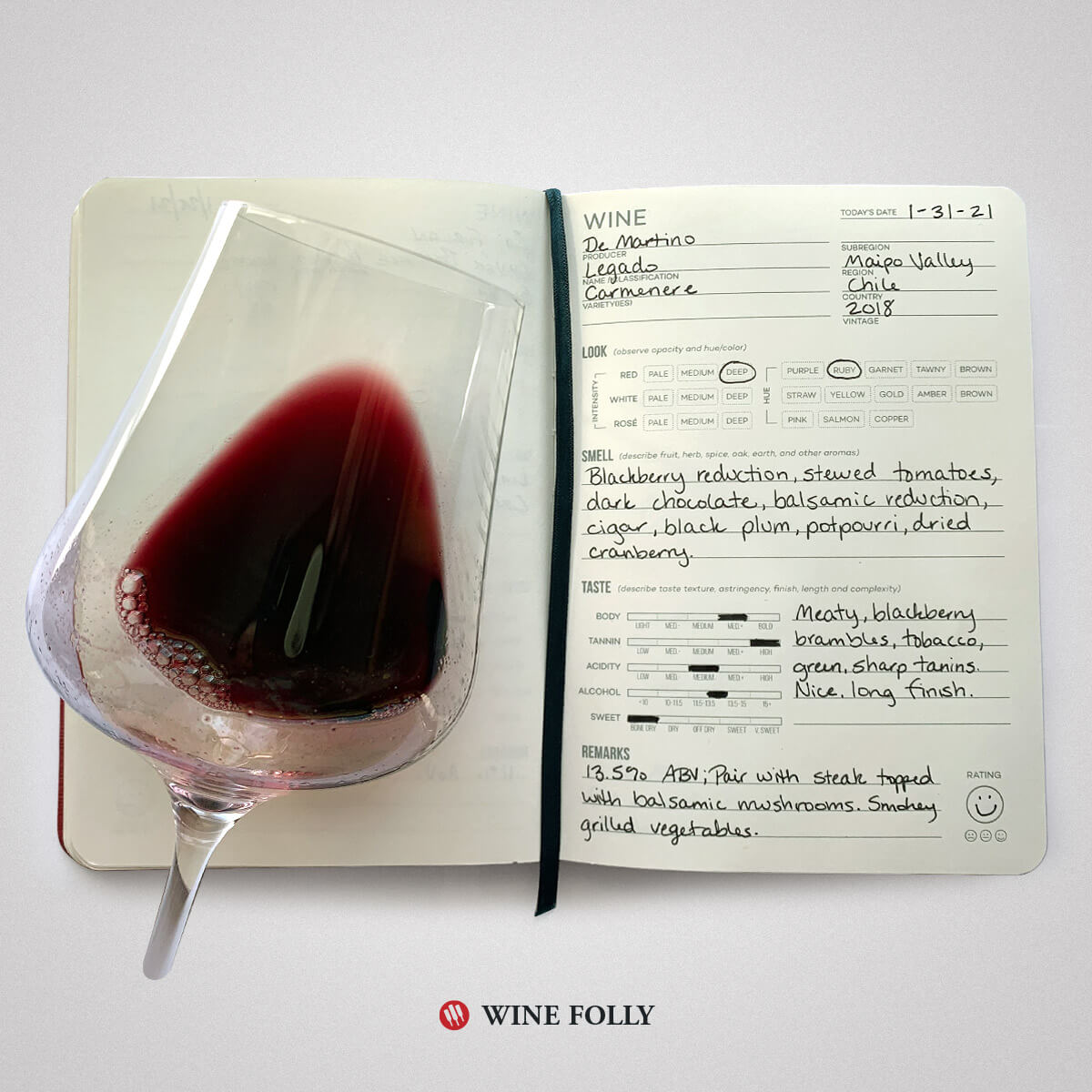Carménère is often overlooked by some wine enthusiasts due to its heavily vegetal nature. It’s brazen, it’s brassy, and it can be tough to pair with the right food. But a well crafted bottle of this Chilean classic can offer up complex aromas at a fraction of the price of its Bordeaux cousins.
Let’s have a look at all this pyrazine-infused red has to offer during this week’s Tasting Challenge.
What is the Tasting Challenge? The challenge is a way to improve your wine palate each week with 34 wines from 12 countries — The Wine Tasting Challenge.

While Carménère isn’t Chile’s most planted grape (that would be Cabernet Sauvignon) no country in the world produces more of it than they do.
For that reason, one could argue that Carménère is their most culturally significant grape, making it a natural choice for the first venture into Chile during this Tasting Challenge.
Adopted from France’s Bordeaux region, it was only in 1996 when the world found out that nearly 50% of Chile’s supposed Merlot crop was actually Carménère.
This went a long way toward breathing new life into a grape that had nearly been forgotten in its homeland.
Maipo Valley is a warmer climate Chilean wine region, leading to the growth of many Bordeaux varieties. The wines made there are known for a distinctly Chilean earthiness, and that distinction was a big factor in choosing this wine.
How would this compare to a French Carménère? Well, that’s tough to say, as there’s so little being planted in France currently. In fact, China grows more Carménère than France at this point.
But due to the fact that it was mistaken for Merlot for a long time, it’s safe to assume that French Carménère would be very similar. That is: medium bodied and tannic, with notes of red and black fruit.

2018 Legado Reserva Carmenere
Look: Deep ruby.
Aromas: Rich and complex! Notes of blackberry reduction, stewed tomatoes, dark chocolate, balsamic reduction, cigar, black plum, potpourri, and dried cranberry.
On The Palate: Blackberry brambles and tobacco. There’s some meaty and rich fruit in there, but you’ll find yourself focusing on the vegetal nature of the wine. Sharp, green tannins and a long finish.
Food Pairing: A steak topped with mushrooms and a balsamic glaze. Perhaps a skewer of smoky, grilled vegetables that still have a lot of crunch to them.
What We Learned About Chilean Carménère
Carménère is originally from France. In fact, it’s one of the six grapes currently allowed in Bordeaux’s famous red blends.
But don’t expect to see vineyards overflowing with these red berries.
A massive phylloxera outbreak destroyed most of Bordeaux’s vineyards in the 1870s, and given the opportunity to rebuild and regroup, most winemakers in the region chose to grow the less difficult Cabernet Sauvignon and Merlot. So for a long time, people assumed that this uncommon grape might actually be extinct.
All of that changed in 1994 when a French scientist discovered that about half of the Merlot grapes that had been grown in Chile for over a century were, in fact, Carménère.
Carménère is very well known for its high levels of pyrazines: the same chemical that gives bell peppers their distinctive odor.
Thanks to this, you can find Carménère that has aromas of peppercorn, cocoa, juniper, and gooseberry: making for a very vegetal wine. Some people find this overpowering, but pyrazines can be a savory blessing to many wine lovers.
Last Impressions
Chilean wine really does have a distinct flavor to it that’s unlike other wine countries. This wine in particular was smooth and rich, with chocolatey notes and plenty of savory characteristics to boot.
The landscape of Chilean wines is broad and delicious – dive into our Thirsty Guide to Chilean Red Wine to get the skinny on a bunch of great options.
